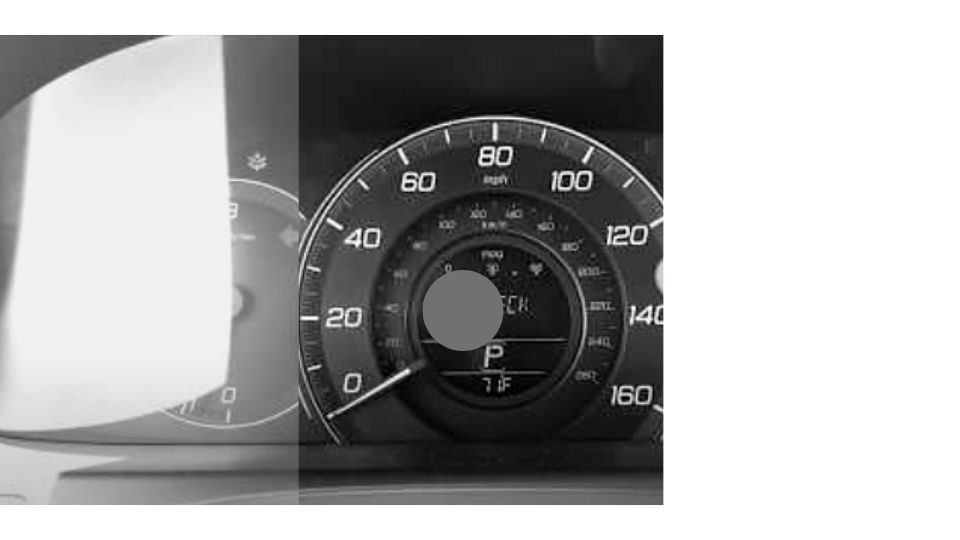Getting a system message on the instrument panel of your dashboard might stress you out, especially if you are unfamiliar with your vehicle. One of these diagnostic system messages you can get on your Honda CR-V is ‘CHECK FUEL CAP.’
So what does it mean? And is it a concern, or can you ignore it without dire consequences on your Honda CR-V? Let’s find out.
What Does It Mean When Honda CR-V Displays Check Fuel Cap
The Honda CR-V is designed with the safety of you and your passengers in mind. One of the features to ensure safe driving of the vehicle is to detect fuel leaks. And if the car detects a fuel leak, you get a warning immediately.
This warning is shown on the instrument cluster of your dashboard so that it is easy to spot and does not pass you.
The vehicle can either leak fuel through the puncture of the fuel tank or evaporation when the fuel cap is missing or not tightly secured in place.
If you get this error, then it means that your Honda’s onboard sensors are detecting an evaporative leak through the fueling area.
Apart from the Check Fuel Cap message, another obvious way to indicate a problem with your fuel cap is the strong smell of fuel. If you start smelling fuel in your cabin, diagnose your fuel cap to check for any signs of leakage.
What Is a Fuel Cap
A fuel cap is a cap that closes the pipe leading to the fuel tank of your vehicle.
Its purpose is to keep foreign objects away from the fuel tank and keep the fuel inside the tank at all times. This is because fuel evaporates in what is called fuel fumes.
For left-hand drive Honda CR-Vs, the fuel cap is on the right side of the vehicle.
Fuel Cap Issues that Could Result to Check Fuel Cap Message
There are several issues that could cause the fuel cap message to appear, including.
- A Missing Fuel Cap
This is the most obvious way of getting this message. And the obvious place to misplace it is a gas station during fill-up.
When you turn on the ignition, the message will show almost immediately. It would help if you replaced the fuel cap, and the message will clear away.
- A Loose Fuel cap
This could be the result of a mechanical problem. As a result, the fuel cap can no longer be tightly secured.
A tightly secured fuel cap will typically do so with a clicking sound. If this sound is no longer present, it is time to replace your fuel cap.
- A Faulty Fuel Cap
After many years of gas station visits, the twisting and turning of the fuel cap have worn out the rubber or ring seal that snugs the fuel cap in place.
When this rubber seal is worn out, fuel vapor evaporates through this space, causing a Check Fuel Cap message.
Can I Drive Honda CR-V With Check Fuel Cap Message
You can drive your Honda CRV depending on whether it is the first time you notice the message on your dashboard or not. For a first timer, it might not be safe to drive.
You need to confirm that the fuel cap is secured as soon as possible However, if after confirming the cap security, you still get the message, then it is safe to continue driving. The Honda system will try to eliminate the message by itself.
How to Fix Check Fuel Cap Warning
If you get the fuel cap error on your Honda while driving, pull off to the side of the road and turn your engine off. Open the fuel door using the designated door knob on the driver’s side. Walk over to the right side of your vehicle with the fuel cap and confirm the presence or lack thereof of the fuel cap.
If the fuel cap is installed, open it completely and retighten it until you hear a clicking sound.
After this, resume everyday driving. The system will clear the message after a short while of driving.
You may notice that the message disappears after a while, but resumes when you turn the ignition off and turn it on again. This should not cause you to worry, as the system will clear the message on its own.
However, if this message is persistent, please check signs of wear on the gas cap. A simple diagnosis like this will help you get rid of that message.
What to Do to Avoid Getting the Check Fuel Cap Light
If you are keen on not getting this message, you should consider the following measures:
- Practice closing the fuel cap the right way. It means aligning the threads perfectly and rotating the fuel cap until you hear a clicking sound. It is usually a sure confirmation of the fuel cap getting secure.
- Regularly check for signs of wear on your fuel cap.
- Take your vehicle for regular service at a certified Honda workshop, where professionals will diagnose your Honda CR-V for any malfunction.
It is important to note that on newer models of the Honda CR-V, getting a system message to check your fuel cap is a thing of the past.
Starting from the 2021 Honda CR-V model, the fuel cap has been replaced with a capless fuel system.
You simply open the fuel door and insert the nozzle of the fuel pump. Once done, shut the fuel door, and you are set.

Robert Anderson is a world class motorhead who rebuilt his first carb at age 10, his first engine at age 15, and completed his first full hotrod build when he was just 18! Previously, he has ran a part warehouse, delivered pizzas, and managed the service department for a $20 million/year revenue dealership. Robert knows cars like few others and he is passionate about sharing his knowledge.

